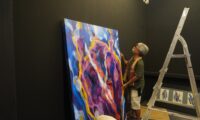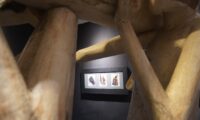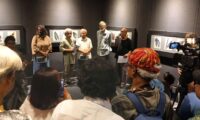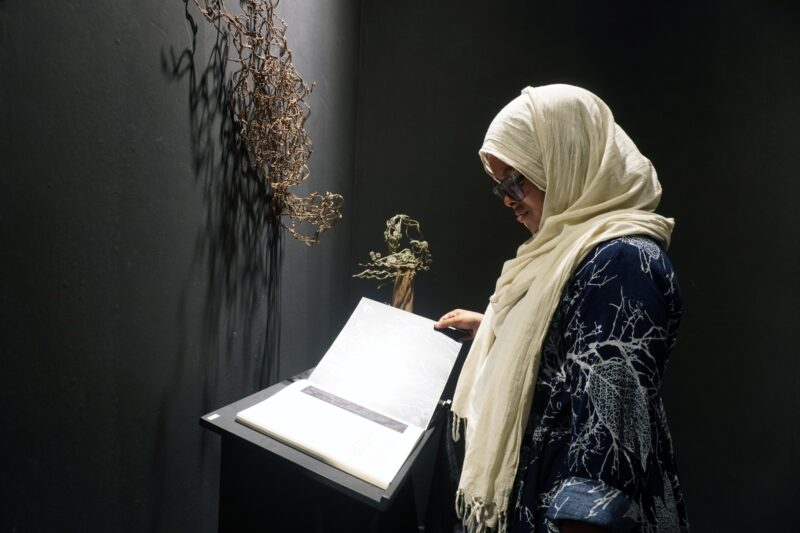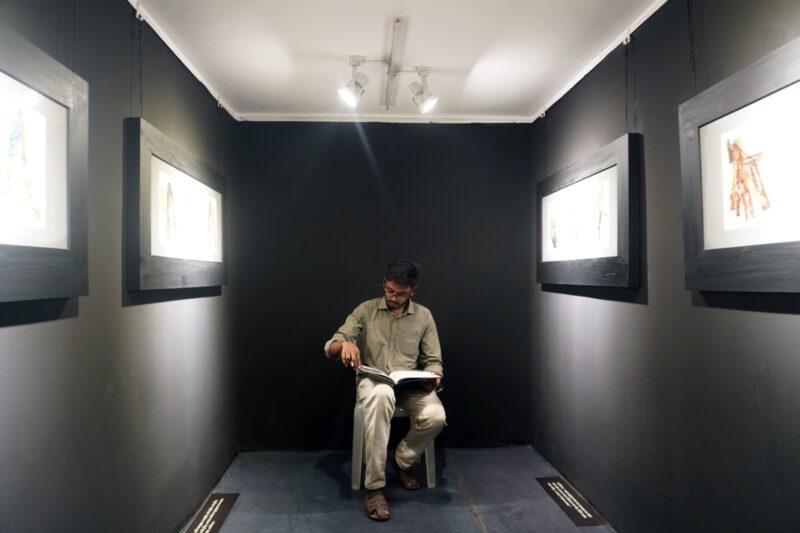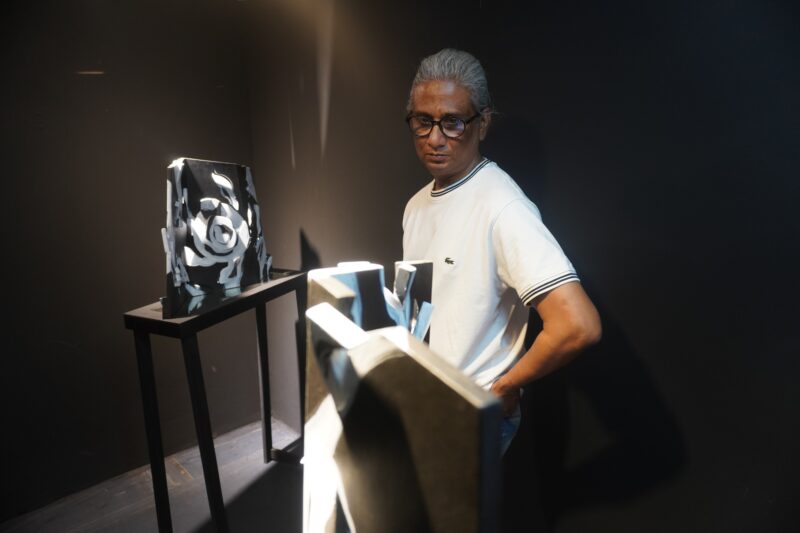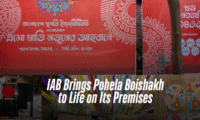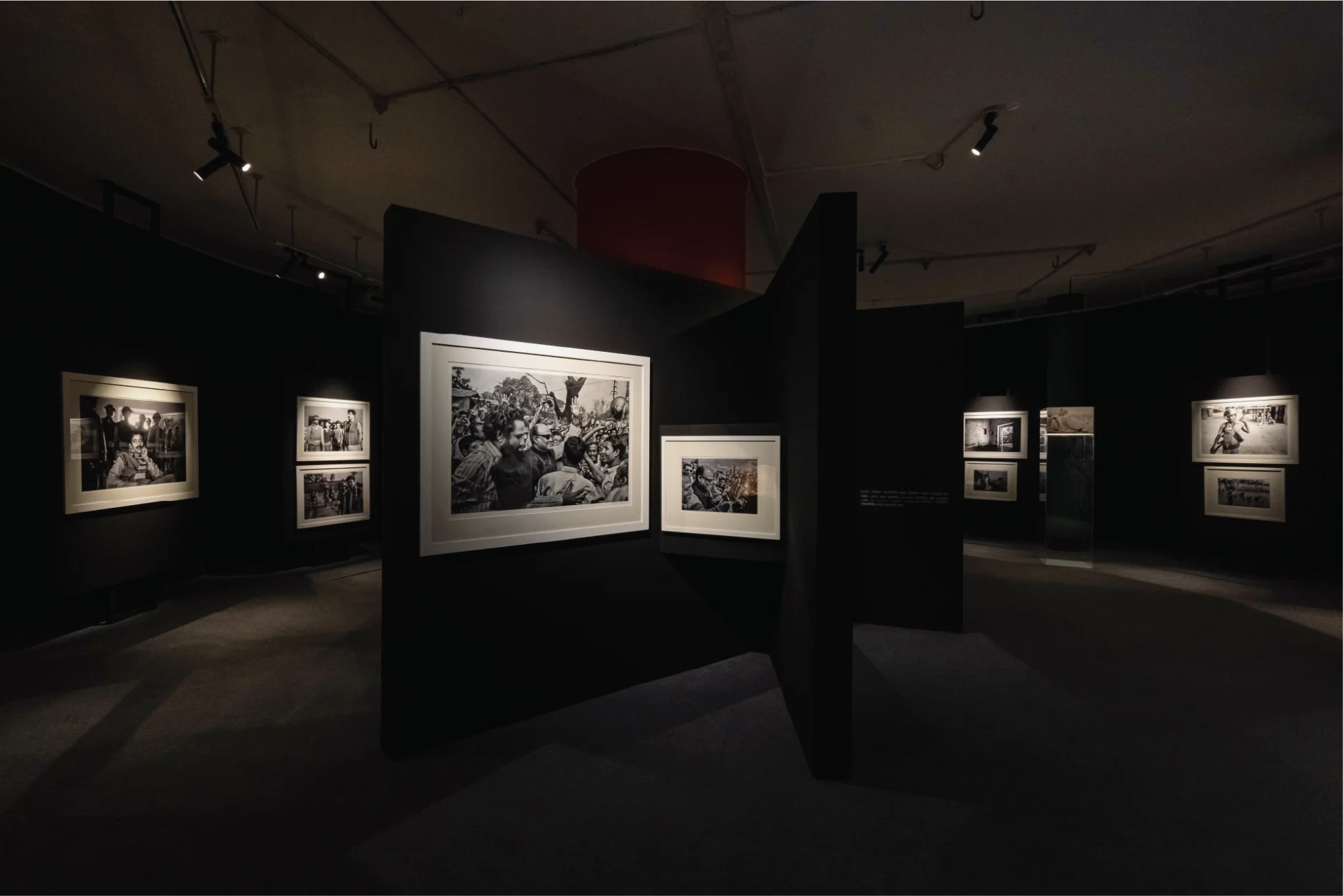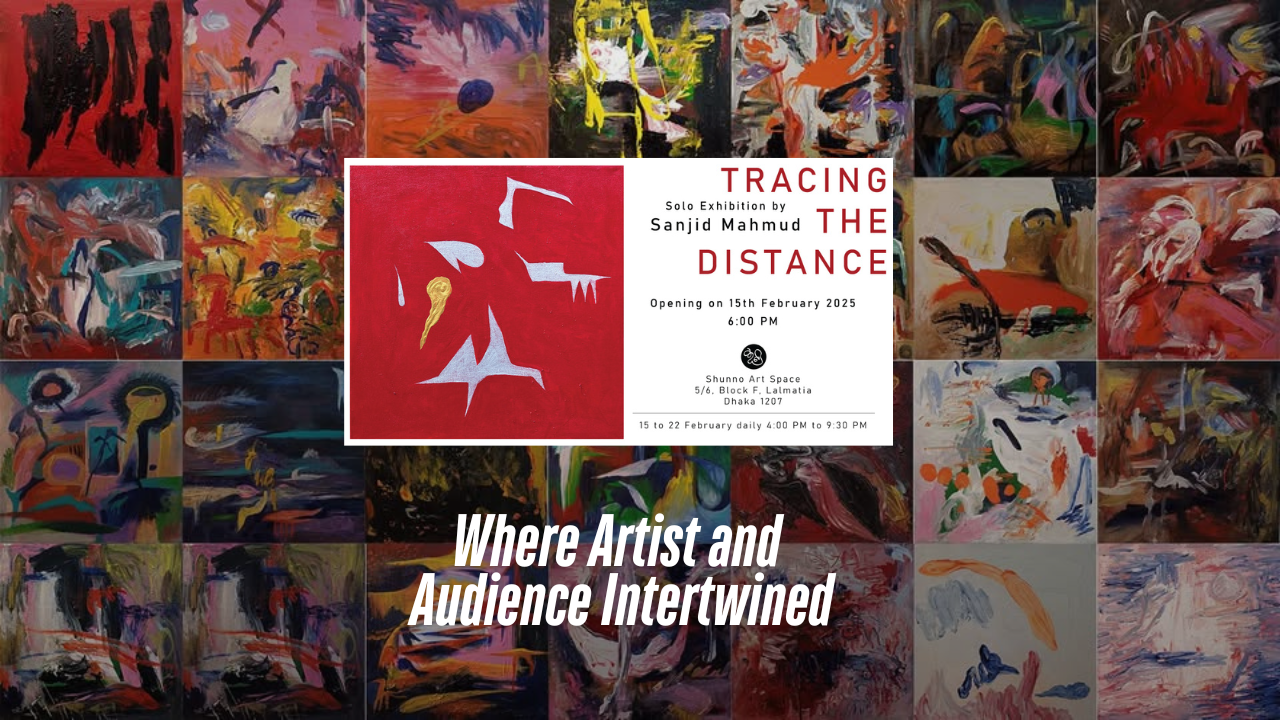
Exploring the Sundarbans’ cryptic mangroves may be a weird, larger-than-life experience. When danger occurs in this wide wilderness, instinct frequently prompts one to seek spiritual protection. In such cases, the Sundarbans’ guardian spirit—Bon Bibi or Bono Bibi—is invoked. Bon Bibi is revered by the local forest dwellers as the divine guardian of the region’s treacherous environment.
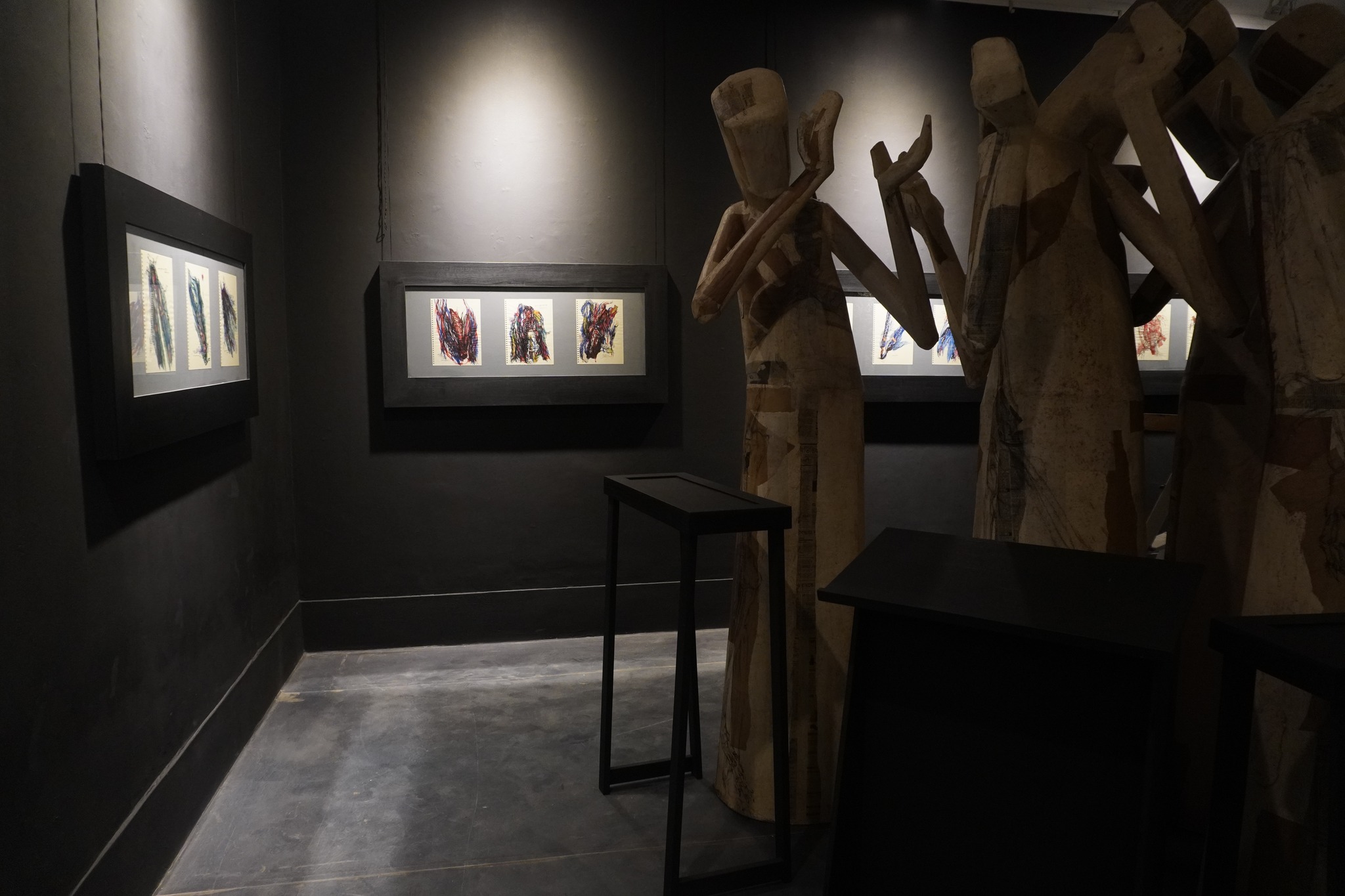
From April 4 to April 20, the Kalakendra gallery at the capital’s Lalmatia featured “In Quest of Bono-Bibi,” a mixed-media solo exhibition by artist Saidul Haque Juise.
Juise, known for his precise craftsmanship, bright masks, and three-dimensional compositions, returned with a solo display following a long absence.
Bon Bibi’s mythology is unique in that it combines both the Islamic and Hindu traditions, and it is commonly held that invoking her name in times of crisis promises divine assistance. The stories related to Bon Bibi are woven in a rich tapestry of mythology, which prodded Juise’s psyche when he was a child. Later in life, deeply touched by the Sundarbans’ environmental deterioration, he created this body of work as a lament and devotion to nature. This anthology, with its recurring themes of environmental concern and political overtones, combines lyrical extracts from folklore or shloks related to Bon Bibi with his own storytelling.
The birth of these artworks dates back to the COVID pandemic. A time when despair loomed large. It was during this emotional upheaval that the artist Juise channeled his sorrow, frustration, and fear into a series of expressive sketches. Using vibrant shades of black, green, red, and blue— which are reminiscent of traditional Bangladeshi folk pottery— Juise stained his pages with raw emotion.
Later, by combining various materials, such as twisted metal wires, paint, ink, handmade paper, newspaper pieces, etc., Juise enhanced the series even further. He was able to convey Bon Bibi’s holy force and the forest’s ethereal essence through these components. His line drawings smoothly blend with his pen and ink pieces to create complex collages that have a vibrant yet delicate vibe. In the meanwhile, the collection gains a tactile, even unearthly quality from his wire sculptures. The series gives viewers a deep feeling of Bon Bibi’s pervasive atmosphere.
Along with his technical finesse, Juise added a unique Bengali flavor to the pieces. He skillfully combined the forms of people, animals, and insects to create flowing silhouettes that convey both motion and motionlessness. These shapes convey a duality: sadness that is subdued yet evident and fury that is controlled but strong. In doing so, Juise creates a collection of work that is both visually pleasing and profoundly significant by balancing artistic form with emotional weight.
“In Quest of Bono-Bibi” stands much like an artistic diary that procures the artist’s personal reflections, cultural memory, and the urgent call for ecological reverence. It bridges folklore and modernity, spirituality and artistry—ultimately offering a visual testament of healing and harmony between humans and the natural world.



